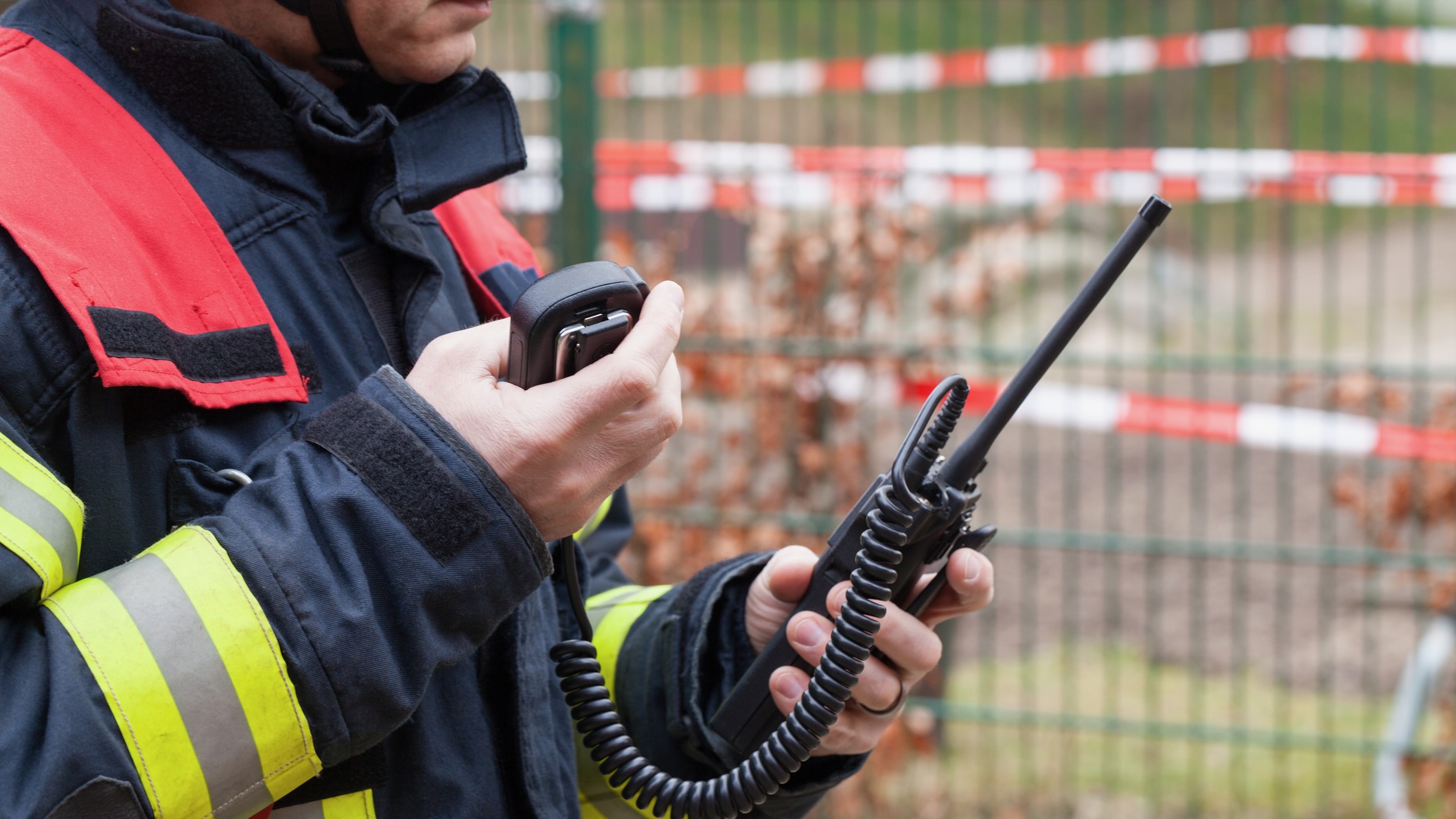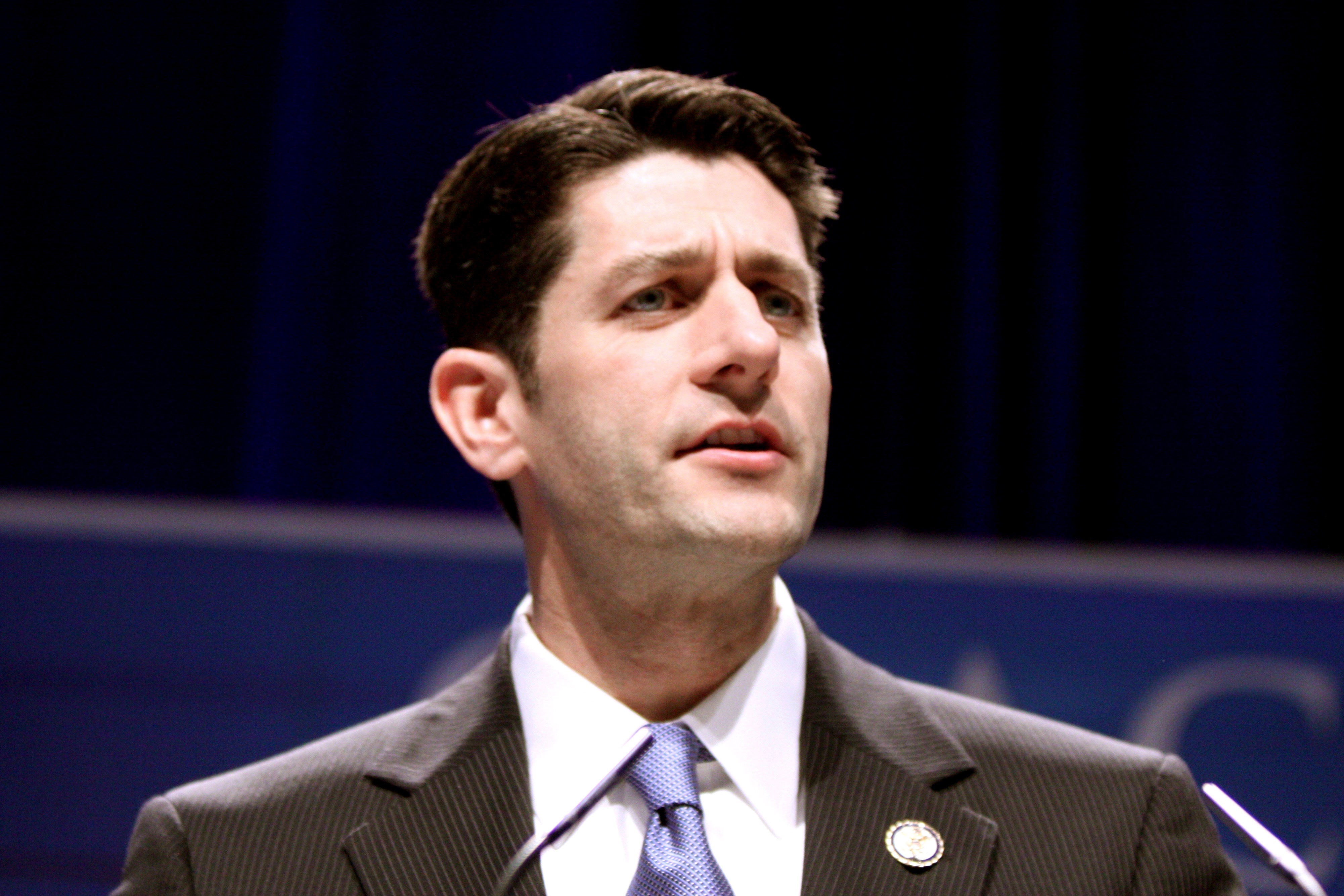How pandemic evacuations created openings for pubcasters to build new studios
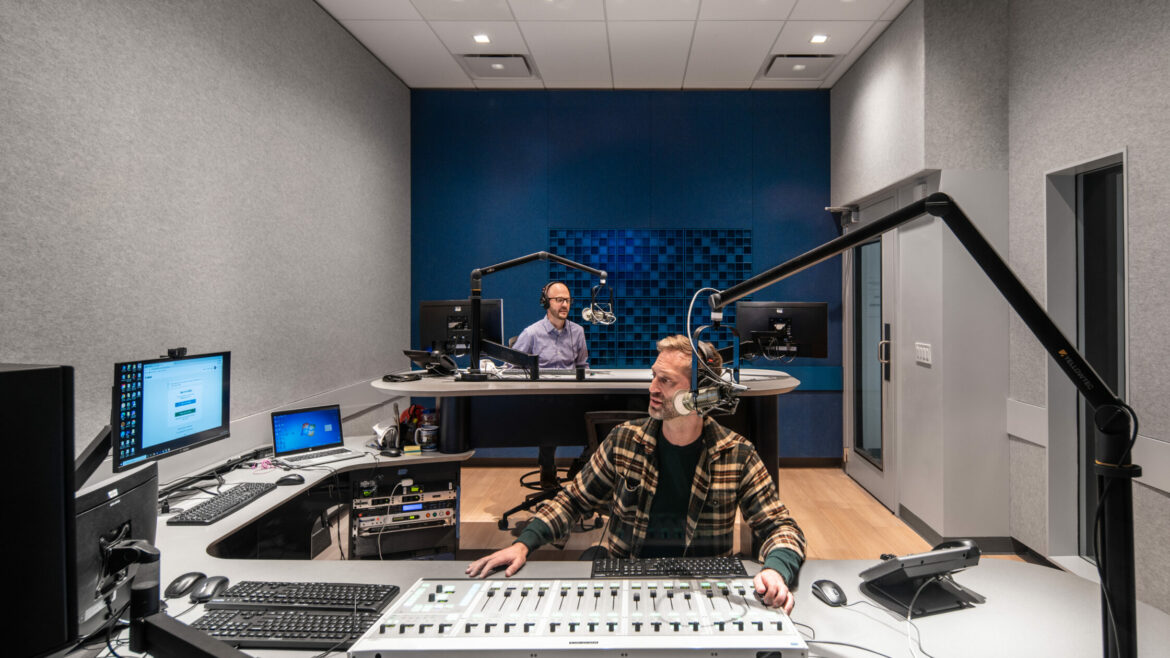
Jason O'Rear / KQED
View of Control Room B in KQED's renovated headquarters.
More than two years into the COVID-19 pandemic, public broadcasters have learned how to originate programming from just about anywhere. Kitchen tables, bedroom closets, attics and basements have been pressed into service as makeshift studios and control rooms, leaving actual studios sitting at least partially idle.
For a few pubcasters, that dislocation created space for planning and construction of new and renovated studio and office spaces that they hope will make their physical plants once again vibrant sources of live programming and community engagement.
Current spoke with three stations about their recent projects, ranging from a community station’s temporary move in Utah, to a planned new home for an all-remote station in Texas and a massive relocation and renovation project by a California joint licensee.
KRCL: Building inside a temporary building in Salt Lake City
For 20 years, KRCL occupied an enviable position among community stations: It owned its own building, a low-slung structure in a cul-de-sac of offices and industry just off the interstate adjacent to the Salt Lake City airport.
Then KRCL’s neighbor, a parking lot, was sold to a developer planning a new apartment complex. Complicating matters, KRCL learned that the access road to its building was private and it might not have a right of way for staff and volunteers to get to its building through the new development. So when the developers made an offer on KRCL’s property, the station accepted – and then had to find a new home for both the short- and long-term future.
It was less of a crisis than it might have been, said chief engineer Bill Ramsay. By the time KRCL had to move out in 2021, the station was already operating on a nearly entirely remote basis.
“We had people doing production at home and running everything from home, voiceovers and stuff, so they were already used to doing everything remotely,” Ramsay said. “We were just sort of coming back into the building a little bit and then we’re like — ‘Oh, we’re moving again.’ So we’re just going to keep everything back at home and everyone is already used to that.”
One of KRCL’s community partners, developer Chris Parker, offered the station space in one of his buildings near downtown Salt Lake City for several years.
“The idea was to move, have a capital campaign and then move again to a permanent space in three to five years,” Ramsay said. Lessons from the pandemic actually helped KRCL figure out how to best utilize its short-term new space.
The office space was small, and there wasn’t enough room for staffers in the front office or development to have dedicated work spaces of their own, Ramsay said. After signing away its old building in mid-2021, KRCL was completely virtual for the rest of the year.
Taking possession of the new space involved its own set of issues. Noisy railroad tracks nearby and a dance studio next door posed some potential sound isolation problems.
The solution, at least until KRCL builds out a new permanent space nearby, was to create what Ramsay called a “box within a box” for its five new studios.
“We isolated the floor with some rubber isolation,” he said. “Lifted the floor by about six inches, filled it with insulation and then did the same thing for the walls.”
Working with an architect with acoustical experience, KRCL built its new studio walls with a product called “green glue” that binds multiple layers of wood and glass and provides isolation from sound transfer.
KRCL bought new Axia digital consoles to replace its aging analog studio gear, as well as a new audio processor to improve its overall on-air sound.
By March of this year, KRCL had brought most of its programming staff back to on-site work in the new location, including seven full-time programming employees and more than 35 volunteer DJs.
As it prepares to ramp up its capital campaign, KRCL plans to make its permanent home right next door in the vibrant downtown neighborhood that Parker hopes to develop into a local arts hub. That next location will include a full suite of office space so development and front-office staff can come back from remote work.
“Even though this is supposed to be the temporary studio, we’re hopefully going to fold it in, to just have a hallway to this next building and just keep expanding,” Ramsay said.
KPFT: Upgrade from a moldy house in Houston
The Houston outpost of the Pacifica Foundation has survived a lot in more than its half-century on the air, including two transmitter site bombings in 1970, one of which took the station off the air for three months. But a combination of financial problems and a decaying studio building pushed KPFT to make a big move after more than 40 years in a converted house in Houston’s once funky and now hip Montrose neighborhood.
Built in 1917, the house was once a showpiece for a local developer, the first in town to boast air conditioning. It was eventually bequeathed to Pacifica for KPFT’s use, but over the years the building suffered from a lack of preventive care.
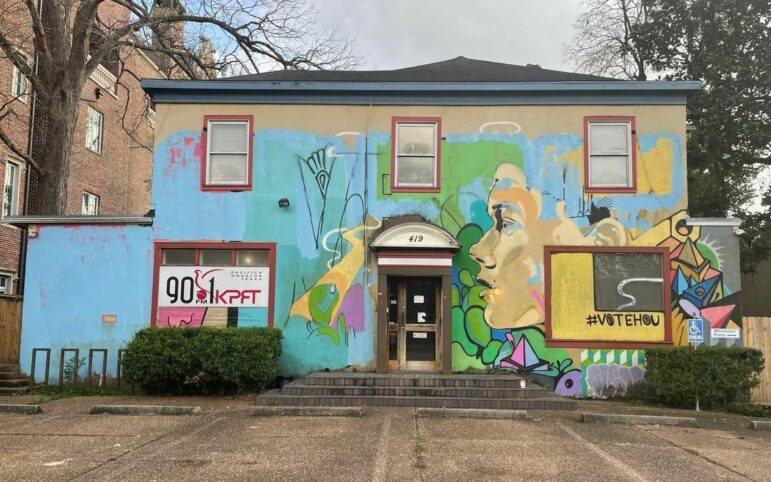
“When maintenance problems came up, things were usually addressed only after they broke,” said Sandy Weinmann, chair of KPFT’s local station board and a longtime on-air volunteer. “Then it was a race to do it, if we could do it. I’m talking about things like replacing the roof, the HVAC systems, the electrical system. God knows why it never burned down, because we had alligator clips for jumpers in the circuit breaker box outside. Lights would flicker in the studio because the grounding was screwed up. We had at least four leaks in the plumbing and the hot water heater had been stolen.”
Then, Weinmann said, came the final straw: white mold that pervaded the building, irritating the eyes and skin of station employees and volunteers. In all, the house needed at least $200,000 in repairs — money that the perpetually cash-strapped operation didn’t have and couldn’t easily raise during the pandemic.
KPFT went completely remote once COVID hit, replacing live on-air fundraising with pre-recorded programming from volunteers who had the ability to work remotely. Meanwhile, the Foundation for the Jewish Community came through with a $3 million loan to help keep the station afloat, taking the Montrose building as collateral while KPFT worked to sell that property. When it sold for $1.2 million, the foundation arranged another loan for KPFT to find a new location. That was a challenge in the steamy Houston real estate market.
Weinmann was part of the search, across the sprawling greater Houston area, for an elusive mix of attributes.
“It’s got to be for mixed commercial use, it’s got to have no [homeowners association], it’s got to have parking for six cars and high ceilings for cabling in the studio,” Weinmann said.
The solution turned out to be not far from KPFT’s former home, in another converted house in Houston’s Midtown neighborhood. KPFT closed on the new building in May and launched a renovation project that aims to move programmers into the new studios later this summer.
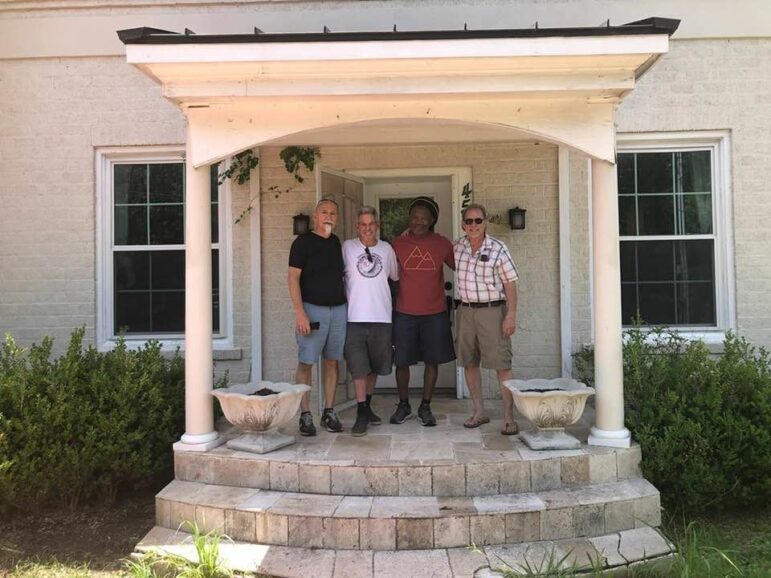
The 2,500-square foot facility will include three studios on the ground floor, including one for live performances that were difficult to accommodate at the old Montrose house, one for KPFT’s main air channel and one for its HD2 programming. Unlike in Montrose, the new studios will be compliant with the Americans with Disabilities Act and will have better air conditioning to help keep COVID at bay.
While some equipment was salvaged from Montrose, Weinmann said other gear needed to be replaced because of mold damage.
“It was in the microphones, it got into the CD players, this white powder that you really couldn’t scrape off easily, and when you wiped it with alcohol, it didn’t do much.”
Weinmann said getting live shows back on the air is a big priority after two years of remote operation, especially with the foundation loan still outstanding.
“Some of our programmers have adapted extremely well. They’re able to put themselves in the moment and be relevant and really sound like they’re live and current,” he said. But many others haven’t been able to do the same. “That’s impacted the quality of programming and funding and audience. So we’re really hoping to get back live and recover some of the original magic immediately.”
KQED: Temporary relocation in San Francisco
If you’re looking for the big public radio and TV station in the Bay Area, you’ll find KQED at the same address it has occupied since the 1990s: 2601 Mariposa St., at the edge of the Mission District. The street address and some of the walls are about the only thing that’s unchanged at KQED, though, following four years in which the station moved out of the building into temporary quarters, thoroughly rebuilt the Mariposa Street facility, then moved back in – even as the pandemic hit halfway through.
KQED began the process in 2018, driven by the realization that its needs had changed dramatically over three decades in the building. Two large TV studios were being used less often for live productions, while KQED-FM had grown into the Bay Area’s top-rated news station, with increased studio and production needs. The building’s facade was forbidding concrete, at odds with a desire to welcome more of the community inside for more live events and interactivity.
After considering other locations in San Francisco and elsewhere in the Bay Area, KQED decided it was better off staying put, said David Hansen, executive director of operations and facilities.
“It came down to the fact that our building was suitable for what we needed to do,” he said, with radio studios that could be updated, good acoustics in its TV spaces and plenty of office space.
“So we decided that the most financially responsible — but the most difficult thing, operationally — to do would be to move out,” he said. “To renovate the building, and then move back in again.”
Where do you put an entire major market radio and TV operation in the meantime? Before the pandemic, office space in San Francisco was in high demand, but real estate consultant David Polatnick found a miracle in the form of Bechtel, the venerable construction firm that was leaving its San Francisco headquarters and moving to Virginia. The company still had years remaining on its lease in a downtown office building, including several floors’ worth of office cubicles it was ready to leave behind for KQED’s use.
Armed with $94 million from an eight-year, $140 million capital campaign that started in 2013, KQED began to plot out the audacious logistics of emptying the Mariposa building and figuring out which operations needed to be on site at the temporary downtown space and what could be handled remotely.
KQED-TV’s master control moved to its transmitter room on Mount Sutro, while KQED-FM began building out prefabricated studio space in the old Bechtel offices to allow production to continue on local newscasts, its Forum talk show and other local programs. Without a dedicated TV studio, KQED-TV farmed out some of its local productions to other private studio facilities in the city.
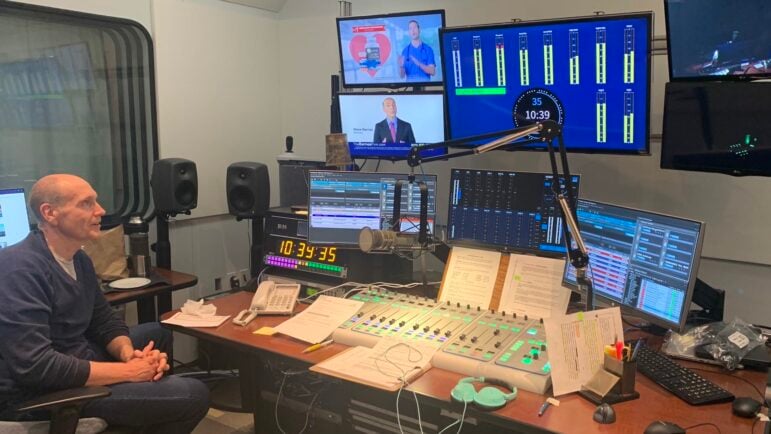
After several months of wrangling fiber connections that had to be modified to feed TV programming from Mount Sutro to outlying transmitter sites and cable companies, by the fall of 2019 all of KQED’s staff had departed Mariposa Street, clearing the way for a speedy project to renovate the old building and move back in within 18 months.
Just a few months into the relocation, however, the pandemic hit, with San Francisco an early hotspot of outbreaks and then lockdowns.
“There were just so many things we didn’t know about it,” said Donny Newenhouse, KQED VP of broadcast engineering and operations, recalling when the station had to quickly pivot in the early days of COVID.
KQED installed UV lights in the temporary studios and began rotating staffers to make sure as few people were in the building as possible, while still keeping the signals on the air. Separate “A” and “B” teams of reporters, hosts and producers alternated times in the building so an outbreak wouldn’t force the entire staff into quarantine. On the TV side, master control operators began working from home, streaming video back from the monitor walls at Mount Sutro to control KQED-TV remotely.
“Had we not done this technology upgrade right before,” Newenhouse said, the remote operations would have been impossible. “There was this coincidental fortuitousness of it.”
As the pandemic accelerated, KQED engineers set up remote radio operations as well, helping hosts and producers configure home studios for hosting and call screening.
In the meantime, with Bechtel’s lease at the temporary downtown offices coming to a close, the work to renovate the Mariposa studio had to continue through the pandemic.
“There were a couple of weeks when we had to wait,” Hansen said, but KQED was able to work with city officials to keep its project going as an essential activity, completing the work on time and on budget.
After initially hoping to leave the temporary downtown space six months before the end of the lease, the full move back to Mariposa came a little closer to the deadline, with staff beginning to return to the renovated building in the summer of 2021.
A new glassed-in lobby houses one of several event spaces, including a converted TV studio that can seat 200 guests and a podcast production facility that is operated in partnership with PRX.
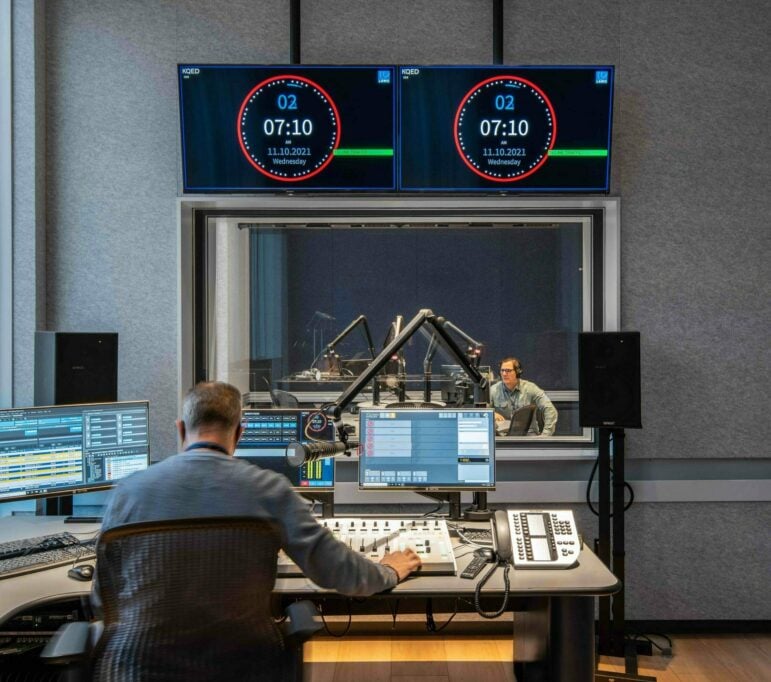
On the radio side, KQED now boasts an expanded newsroom and additional studio space that it says is better suited for its needs. In addition to its traditional larger studios, there are now five “edit-interview rooms” that can be used both for one-person editing and production and for two-person interviews that no longer require a full studio space and staff.
“A lot of the new audio production we’re doing is podcast-based, so it’s an on-demand kind of thing,” Hansen said. “So we’ve built these new recording environments that aren’t connected to control rooms.” Equipped with both audio and video gear, the new rooms include a traditional talk studio built around a table, and another where guests can sit more informally on couches.
With the pandemic still not over, the events space in KQED’s new facility has yet to be used at full capacity. Many of the station’s employees continue to work remotely, though Hansen said the station’s parking garage has been close to full some days for the first time since the start of the pandemic.
Whether or not everyone returns to the building full time, Newenhouse said the project and the pandemic demonstrated the value of flexibility in today’s broadcast technology.
“I think remote contribution is key. Just having your folks be comfortable with being able to access assets and contribute assets from anywhere,” he said.
In a location where the earth can shake at any moment, KQED’s ability to pivot to remote operation, as well as its enhanced generator capability installed during the renovation, could prove valuable even after the pandemic.
“There’s always the specter of some new challenge,” Hansen said. “So yeah, we’re much more nimble and prepared for anything.”




